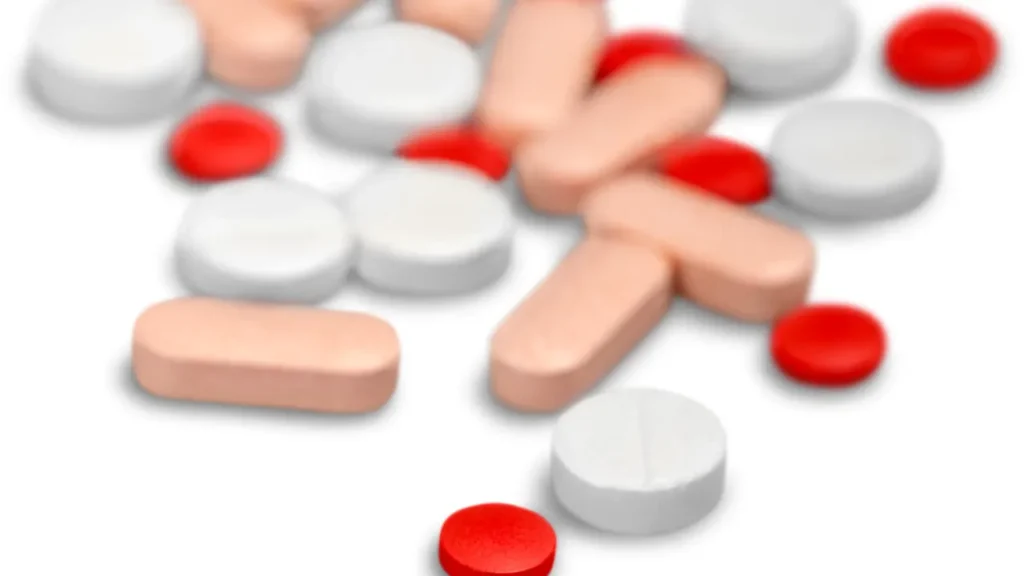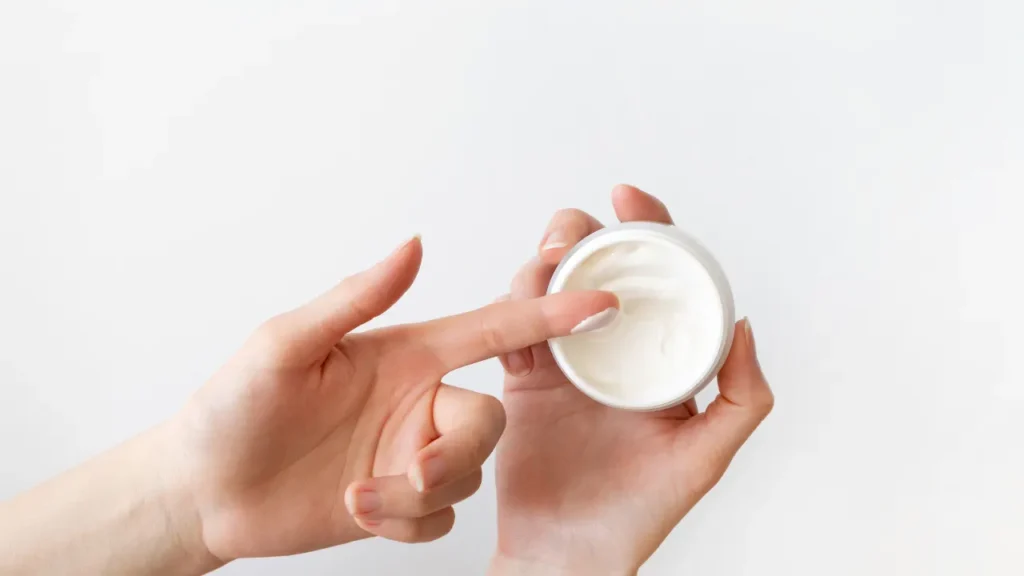Description
A family record of allergic diseases, such as asthma and hay fever, is typically linked to the eczema variety known as atopic dermatitis. This disorder frequently manifests in childhood and may continue until adulthood. Atopic dermatitis patients typically have dry, sensitive skin which becomes readily inflamed. Scratching can also lead to an infection with germs or viruses which aggravates the symptoms.
Atopic dermatitis indications often first manifest in infancy, with 60% of cases occurring in the initial year after birth and 90% by the age of five. Atopic dermatitis signs can range in severity and can impact several body parts, particularly the face, feet, hands, and flexural regions (such as the inner surfaces of the elbows and the rear part of the knees). Weeping lesions or blisters with crusting may form on the affected skin which causes them to be dry, red, and itchy. The skin might also thicken and become flaky and rough.
You May Also Like:
HOO RAA CBD VS PARTNERED PROCESS CBD
CBD CONTRACT MANUFACTURER –TOP 5 BEST IN CLASS FOR 2022
Atopic dermatitis: Description, Causes, and Treatment Protocol is an original (HealthXWire) article.
Possible Causes
Atopic dermatitis is thought to be brought on by a confluence of both environmental and genetic variables. While its specific etiology is yet unknown, genes that control the functioning of the skin’s barrier along with the way the immune system responds to allergens are among the many genes that have been linked in research to an elevated chance of acquiring atopic dermatitis.
Receiving exposure to allergens (pet dander, pollen, and dust mites), irritants (harsh chemicals, soaps, and detergents), along variations in moisture and temperature are all components of the environment that might play a role in the growth of atopic dermatitis. In rare instances, hormonal changes, stress, or infections may cause atopic dermatitis or make it worse.
Exacerbating and Mitigating Factors
The symptoms and signs of atopic dermatitis can be made worse or better. The aggravating factors are as follows: –
Allergens: Animal dander, dust mites, mold, and pollen are typical allergens that may trigger indications of atopic dermatitis.
Irritants: Atopic dermatitis conditions can be made worse by being exposed to irritants like detergents, soaps, and solvents as they make the skin dryer. The chemical components of those substances might be a trigger for atopic dermatitis as well.
Climate: Hot, moist conditions can make you sweat, which can worsen symptoms, whereas dry, cold conditions can leave one’s skin dry and irritated.
Stress: Being stressed can cause or exacerbate atopic dermatitis as stress can directly the body’s immune system.
Hormones: Hormonal changes, especially those that occur during adolescence and pregnancy, can cause or exacerbate the indications of atopic dermatitis.
On the other hand, the mitigating factors are as follows: –
Proper skin care: The intensity of atopic dermatitis can be reduced by using gentle soap and washing techniques. Adequate skin care also helps to protect the skin barrier.
Moisturizing: Emollient or moisturizer application on a daily basis helps keep the skin moisturized and assists in preventing outbreaks of atopic dermatitis.
Stress management: The frequency of atopic dermatitis breakouts can be decreased by engaging in stress-relieving activities like deep breathing exercises or meditation.
Avoiding triggers: The frequency and intensity of flare-ups can be decreased by recognizing and avoiding factors that exacerbate atopic dermatitis.

Standard Treatment Protocol(s)
The standard course of treatment for atopic dermatitis comprises: –
Topical corticosteroids: These medicines are intended to lessen itchiness and swelling in the skin’s afflicted regions. They come in different strengths and are often used once or twice every day until the symptoms subside.
Antihistamines: Antihistamines might be administered to treat atopic dermatitis’ itchiness and swelling. Such medications can make some individuals feel sleepy and can be purchased by prescription or over-the-counter.
Antibiotics: Antibiotics can be recommended to treat skin infections if they exist.
Topical calcineurin inhibitors: These drugs are intended to lessen itchiness and swelling in the afflicted regions. They come in different strengths and are often used only once or twice each day until the symptoms subside.

Treatment Options
There are multiple therapy options available in addition to regular treatment regimens which serve as adjunct therapies to increase the effectiveness of standard treatment. Among these options are: –
Prescription medications:
Sometimes, severe instances of atopic dermatitis are treated with this immunosuppressant drug. Cyclosporine inhibits the body’s immune system’s reaction to allergens and various other triggers. It is typically used in situations where previous therapies have failed because it brings considerable side effects to the body.
- Dupilumab
Interleukin-13 (IL-13) and Interleukin-4 (IL-4), which are implicated in the inflammatory procedure associated with atopic dermatitis, are inhibited by Dupilumab. Dupilumab is licensed for usage by adults and adolescents suffering from mild-to-severe atopic dermatitis. Clinical trials have demonstrated its efficacy in lowering atopic dermatitis indications.
Topical immunomodulators: Topical immunomodulators are prescribed and can be utilized to treat atopic dermatitis in mild to moderate instances.
Over-the-counter formulations:
The following are some over-the-counter remedies for atopic dermatitis: –
- Colloidal oatmeal
It has been demonstrated that colloidal oatmeal has been included in creams, lotions, and bath treatments among other over-the-counter goods which can help patients lessen their itching and irritation.
- Moisturizers containing ceramides
Ceramides are organic lipids that make up the skin’s protective layer. Ceramide-containing moisturizers have been demonstrated to be beneficial in enhancing the barrier function of the skin and minimizing atopic dermatitis severity.
Phototherapy: This procedure involves carefully regulating the amount of UV radiation that is applied to the skin. Phototherapy can help the affected parts of the skin feel less itchy and inflamed.
Systemic medications: Systemic medicines may be used if the symptoms of atopic dermatitis worsen. These drugs decrease the immune system’s reaction all over the body and can be administered orally or intravenously. This reaction may result in major side effects and thus this type of medicine is only used in severe instances.
Natural remedies: Natural remedies may also help in supporting the existing treatment protocols. They are as follows:
- Aloe vera
Itching and inflammation may be reduced by using aloe vera gel on the skin’s afflicted regions. Aloe vera possesses antifungal, and antibacterial qualities, and also soothes irritated skin.
- Coconut oil
Coconut oil serves to hydrate and calm the skin by being applied to the affected regions. Additionally, coconut oil possesses anti-inflammatory and antimicrobial qualities.
Nutritional supplements: Several dietary supplements are effective in dealing with the symptoms and indications of atopic dermatitis. These consist of: –
- Omega-3 fatty acids
Omega-3 fatty acid supplements may assist in decreasing inflammation and enhance the condition of the skin.
- Zinc
Supplementing with zinc may help the skin’s general health and minimize the chance of infection.
- Vitamin D
Supplementing with vitamin D also decreases inflammation and enhances the general well-being of the skin.
- Probiotics
Probiotics can be administered topically or consumed orally. It can help to build a stronger and healthier microbiome that may help in the recovery of the skin.
Lifestyle modifications: Staying away from irritants and triggers, moisturizing the skin, and refraining from scratching the afflicted regions are some lifestyle changes that might assist with regulating the signs and effects of atopic dermatitis. Moreover, by consuming a balanced diet, having adequate sleep, and controlling stress levels, people can also maintain optimal health in general. More substantial lifestyle adjustments, such as limiting specific foods and minimizing exposures to environmental allergens, could be required for people with acute atopic dermatitis.

Conclusion
Atopic dermatitis affects the skin and its occurrence is linked with allergic diseases such as asthma or hay fever. It is characterized by chronic inflammation and intense itching of the skin. It may be attributed to factors such as allergens, irritants, climate, stress, and hormones. This type of condition demands a comprehensive approach to management which includes standard treatment protocol and supportive alternative treatments. The treatment’s main target is to stop the itchiness by reducing histamine attacks while maintaining optimal skin hydration and steering clear of potential triggers.
Hence, the treatment often involves the use of topical steroids, emollients, and, in more severe instances, oral medications. Patients have to receive regular consultations with dermatologists to monitor their progress and adapt to new treatment plans. Though a complete cure for atopic dermatitis is difficult patients could empower themselves to navigate the challenges of atopic dermatitis, fostering a healthier and more comfortable quality of life.

Additional resources for further reference
https://www.aad.org/public/diseases/eczema/types/atopic-dermatitis
https://www.webmd.com/skin-problems-and-treatments/eczema/eczema-basics
Important Note: The information contained in this article is for general informational purposes only, and should not be construed as health or medical advice, nor is it intended to diagnose, prevent, treat, or cure any disease or health condition. Before embarking on any diet, fitness regimen, or program of nutritional supplementation, it is advisable to consult your healthcare professional in order to determine its safety and probable efficacy in terms of your individual state of health.
Regarding Nutritional Supplements Or Other Non-Prescription Health Products: If any nutritional supplements or other non-prescription health products are mentioned in the foregoing article, any claims or statements made about them have not been evaluated by the U.S. Food and Drug Administration, and such nutritional supplements or other health products are not intended to diagnose, treat, cure, or prevent any disease.
Table of Contents


